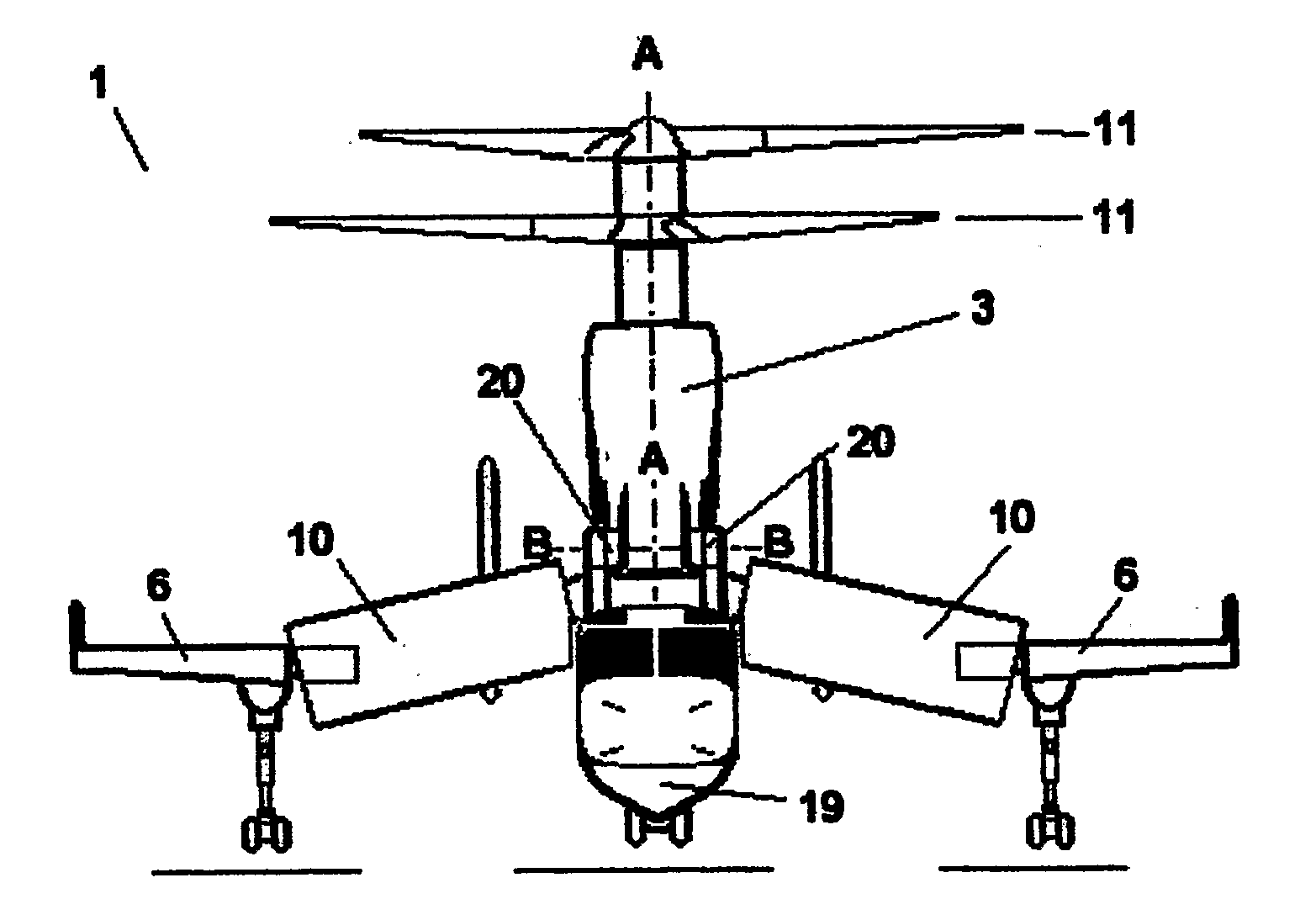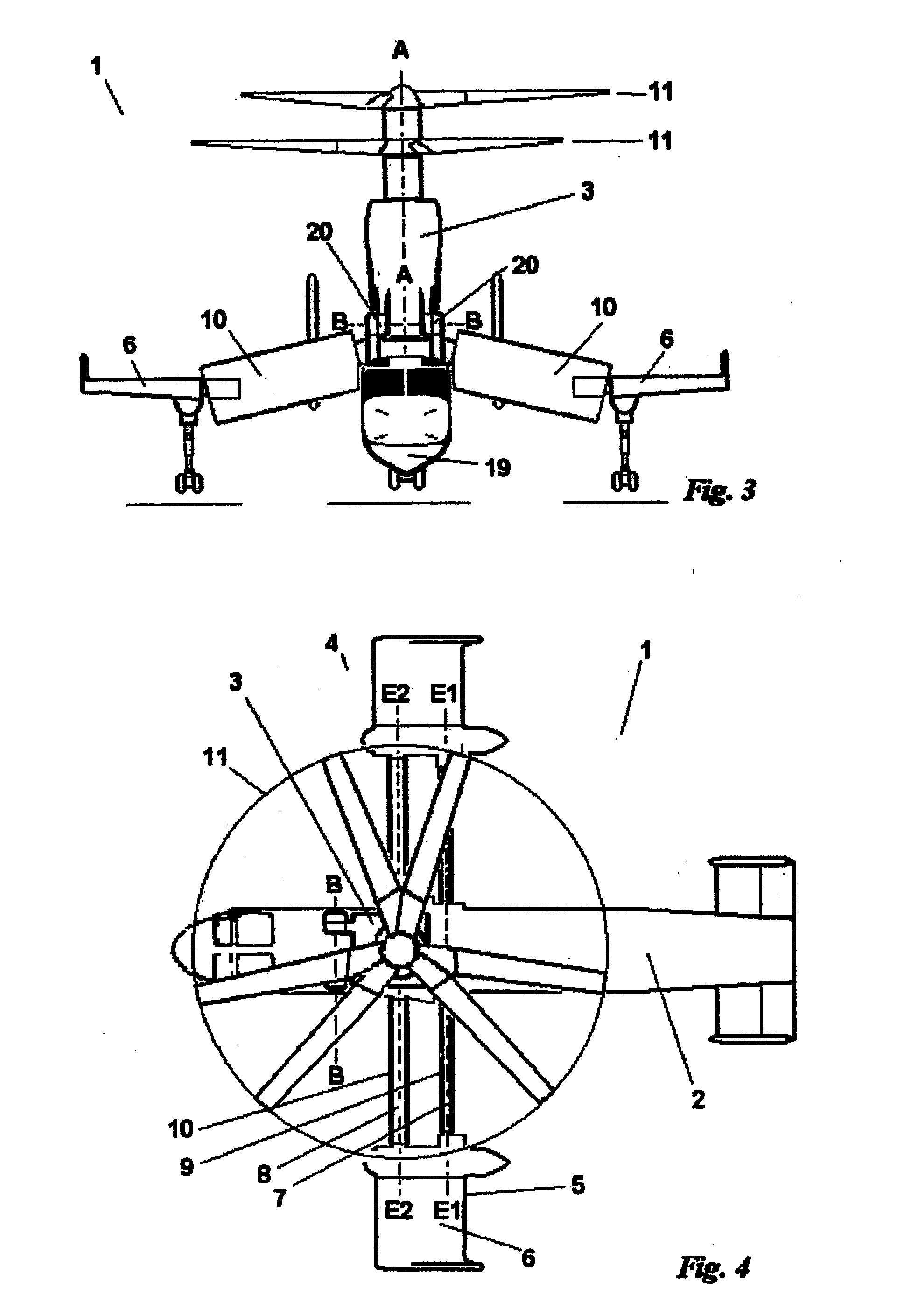Tilt-rotor aircraft
a tilt-rotor aircraft and tilt-rotor technology, applied in the direction of rotor aircraft, vertical landing/take-off aircraft, power plant arrangement/mounting, etc., can solve the problems of economic cost of acquisition and operation, the difficulty of manoeuvre, landing or taking off of twin-prop airplanes that lose all thrust from one side, and the yaw problem can escalate into irrecoverable roll
- Summary
- Abstract
- Description
- Claims
- Application Information
AI Technical Summary
Benefits of technology
Problems solved by technology
Method used
Image
Examples
Embodiment Construction
[0072] With reference to FIGS. 1 to 4, a convertiplane 1 comprises a fuselage 2, a rotornacelle 3 attached above the fuselage 2, and a wing 4.
[0073] The rotornacelle 3 supports two rotors 11 that rotate in opposite directions about the common axis A, so setting aside other influences, the force vector produced by the rotors 11 is aligned to axis A. The rotornacelle 3 houses the engines and known devices—not forming part of the present invention and therefore not shown—for transmitting power to and for controlling the cyclic and collective pitch of the rotors 11. In particular the rotors are coupled through a differential gear to equalise the torque supplied to each, any imbalance relative to axis A manifesting itself as a torque reaction on the differential casing which is transmitted to the airframe. This torque imbalance is cancelled by control of the relative collective pitch of the two rotors, and this also is employed to maintain yaw control of the aircraft in hover mode and a...
PUM
 Login to View More
Login to View More Abstract
Description
Claims
Application Information
 Login to View More
Login to View More - R&D
- Intellectual Property
- Life Sciences
- Materials
- Tech Scout
- Unparalleled Data Quality
- Higher Quality Content
- 60% Fewer Hallucinations
Browse by: Latest US Patents, China's latest patents, Technical Efficacy Thesaurus, Application Domain, Technology Topic, Popular Technical Reports.
© 2025 PatSnap. All rights reserved.Legal|Privacy policy|Modern Slavery Act Transparency Statement|Sitemap|About US| Contact US: help@patsnap.com



